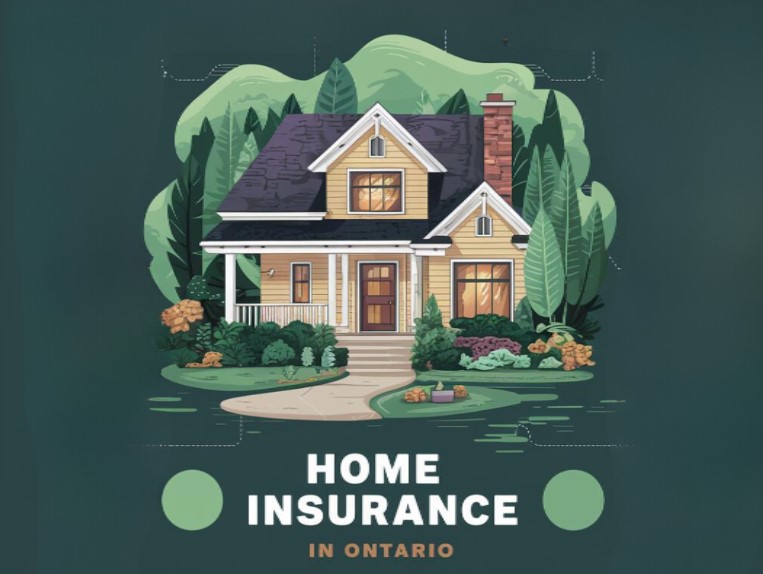As a homeowner in Ontario, one of the crucial decisions you’ll make is choosing the right home insurance. It’s not just about protecting your property; it’s about securing your peace of mind.
Whether you’re a first-time buyer or a seasoned homeowner, here’s what you need to know about home insurance in Ontario in 2024.
Why Home Insurance Matters

Home insurance is your safety net. It covers your home and belongings against damage or loss from events like fire, theft, and certain types of weather damage. Plus, it offers liability protection if someone gets injured on your property.
Think of it as a shield for your home and everything inside it. Given the recent rise in insurance costs across Ontario, it’s crucial to stay informed about how these changes might affect you. This is where you can learn more.
Types of Home Insurance Policies
Home insurance isn’t one-size-fits-all. There are different types of policies, each offering varying levels of coverage:
- Comprehensive Coverage: The most extensive type, covering both the building and its contents against all risks, except those specifically excluded.
- Basic or Named Perils Coverage: Covers only the perils explicitly listed in the policy, such as fire, theft, or vandalism.
- Broad Coverage: A middle ground, covering the building on an all-risk basis and contents on a named-perils basis.
- No Frills Coverage: For homes that don’t meet normal insurance standards. Offers very basic coverage.
What’s Covered and What’s Not
Home insurance typically covers:
- Dwelling: The structure of your home.
- Personal Property: Your belongings like furniture, electronics, and clothes.
- Liability: Legal responsibility for injury or property damage to others.
- Additional Living Expenses: Costs of living elsewhere if your home is uninhabitable due to a covered loss.
However, not everything is covered. Common exclusions include:
- Flooding: Most policies don’t cover damage from overland flooding, but you can add this coverage.
- Earthquakes: Similar to flooding, you often need to purchase additional coverage.
- Wear and Tear: Damage due to normal wear and tear or lack of maintenance.
- Certain Personal Items: High-value items like jewelry or artwork may have limited coverage unless you specifically insure them.
Factors Affecting Your Premium
Several factors influence how much you’ll pay for home insurance:
- Location: Your home’s location affects your premium. Urban areas might have higher rates due to higher crime rates, while rural areas might face risks like forest fires.
- Home’s Age and Condition: Older homes or homes in disrepair may cost more to insure.
- Replacement Cost: The cost to rebuild your home influences your premium.
- Claims History: Your personal claims history and that of your home can affect rates.
- Coverage Amount: Higher coverage limits mean higher premiums.
- Deductible: A higher deductible can lower your premium, but it means paying more out-of-pocket in a claim.
Tips to Lower Your Premium
- Increase Your Deductible: Opt for a higher deductible to lower your monthly premium.
- Bundle Policies: Combine home and auto insurance with the same provider for discounts.
- Home Security: Install smoke detectors, security systems, and deadbolt locks.
- Loyalty Discounts: Some insurers offer discounts for long-term customers.
- Shop Around: Compare quotes from multiple insurers to get the best rate.
How to Choose the Right Policy

Finding the right home insurance policy involves assessing your needs and comparing options. Here’s how to get started:
- Evaluate Your Needs: Consider the value of your home and belongings, and assess your risk factors.
- Get Multiple Quotes: Don’t settle for the first quote. Compare offerings from different insurers.
- Check the Insurer’s Reputation: Look at customer reviews and ratings to ensure you’re dealing with a reliable company.
- Read the Fine Print: Make sure you understand what’s covered and what’s excluded in the policy.
- Ask Questions: Don’t hesitate to ask your insurance broker or agent about anything you’re unsure of.
Common Mistakes to Avoid
- Underinsuring Your Home: Make sure your policy covers the full replacement cost of your home.
- Ignoring Policy Exclusions: Be aware of what’s not covered to avoid surprises.
- Overlooking Discounts: Ask about all available discounts to reduce your premium.
- Not Updating Your Policy: Update your coverage if you renovate your home or buy expensive items.
Claims Process
First things first, as soon as something happens, get in touch with your insurance company right away. They’ll want to know all the details, so be prepared to provide as much information as you can.
Next, start documenting the damage. Take lots of photos or videos – this will help the insurance adjuster get a clear picture of what happened.
Once you’ve got that covered, you’ll likely need to fill out some paperwork. Your insurer will provide the necessary forms, so just follow their instructions carefully.
Now comes the in-person assessment. An insurance adjuster will probably want to come take a look at the damage themselves. Don’t be nervous – they’re just there to help get your claim processed.
If repairs are needed, go ahead and get a few estimates so you can provide those to the insurance company. They’ll review everything and, if your claim is approved, you’ll receive payment to cover the costs.
I know dealing with all this can be stressful, but try not to worry. Just take it one step at a time, and I’m confident we can get your claim resolved with as little hassle as possible.
Staying Prepared
Preparation is key to handling emergencies. Here are some proactive steps:
- Create an Inventory: Keep a detailed list of your belongings with photos and receipts.
- Update Your Policy: Regularly review and update your insurance policy to reflect any changes.
- Have an Emergency Plan: Know what to do in case of fire, flooding, or other disasters.
- Secure Important Documents: Keep insurance documents in a safe, easily accessible place.
Final Thoughts

Home insurance is a critical part of homeownership in Ontario. It’s not just about compliance; it’s about safeguarding your home and everything you hold dear. By choosing the right policy and staying informed, you can ensure that you and your home are protected against the unexpected. Whether it’s finding ways to lower your premium or understanding the claims process, being proactive about your home insurance can make all the difference. So take the time to assess your needs, shop around, and choose a policy that offers the peace of mind you deserve.
Related Posts:
- Top 16 Best Office Chair Covers 2024 - Chair…
- 20 Best Gaming Headset Under 50$ 2024 - for PC, PS4,…
- Top 10 Best Leather Backpack For Men and Women 2024…
- Top 10 Best Scrubs For Women 2024 - Pants for Nurses…
- 12 Best Car Wax For Black Cars 2024 - Protection and…
- Top 10 Best Power Inverter for Car 2024 - Keep Your…







